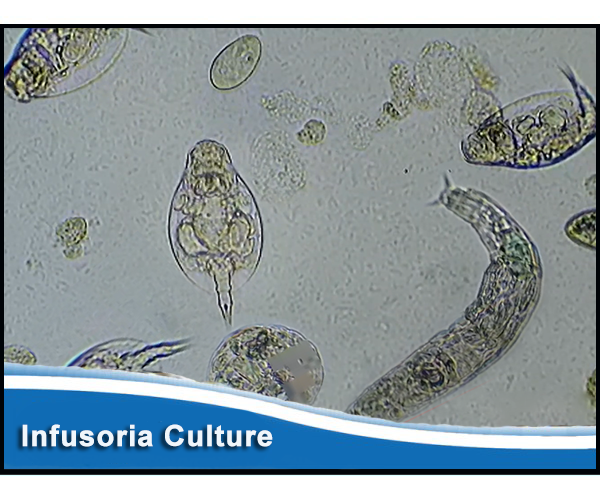Infusoria is a term used to describe a diverse group of microscopic organisms that are found in aquatic environments. These tiny creatures play a crucial role in maintaining the health and balance of aquatic ecosystems, serving as a primary source of food for many other organisms.
Infusoria can be found in virtually any freshwater environment, from stagnant ponds and lakes to swiftly flowing streams and rivers. They are typically between 50 and 200 micrometers in size, making them invisible to the naked eye. However, they can often be seen as tiny specks or clouds in water that has been allowed to stand for a few days.
Infusoria can be particularly useful for feeding newly hatched fish, as they are small enough to fit in their mouths and are easy to digest. They can also help to stimulate the growth and development of young fish, as they contain a range of essential nutrients.
Infusoria are primarily composed of unicellular organisms, including protozoans and other single-celled organisms. They are also home to a variety of multicellular organisms, such as rotifers and water bears. These organisms are incredibly diverse in their appearance, behavior, and life cycle, making them a fascinating subject of study for biologists and microscopists.
One of the key roles that Infusoria play in freshwater ecosystems is as a food source for other organisms. Many small aquatic creatures, such as fish fry, mosquito larvae and aquatic insects, rely on infusoria as their primary source of nutrition. In turn, these creatures serve as food for larger predators, such as fish and birds.
Infusoria are also important decomposers, breaking down dead organic matter and returning nutrients to the ecosystem. They can be especially helpful in areas where other decomposers, such as bacteria and fungi, are limited in their ability to break down organic material.
In addition to their ecological importance, Infusoria have also played a significant role in scientific research. Because they are relatively easy to culture and observe under a microscope, they have been used as model organisms in a wide range of studies, including genetics, developmental biology, and ecology.
To culture culture infusoria for use as fish food, you can start by collecting a sample of water from an established aquarium or pond. You can then place this water in a container and add some boiled vegetables or rice to act as a food source for the Infusoria. Over time, the Infusoria will multiply and become a dense culture that can be harvested and fed to your fish.
Overall, Infusoria are a fascinating and important group of organisms that play a critical role in maintaining the health and balance of freshwater ecosystems. By understanding their biology and ecology, we can better appreciate the complexity and beauty of the natural world and work to protect it for future generations.
Infusoria starter cultures are available for ordering from our webstore. Click here to order infusoria starter culture online.


